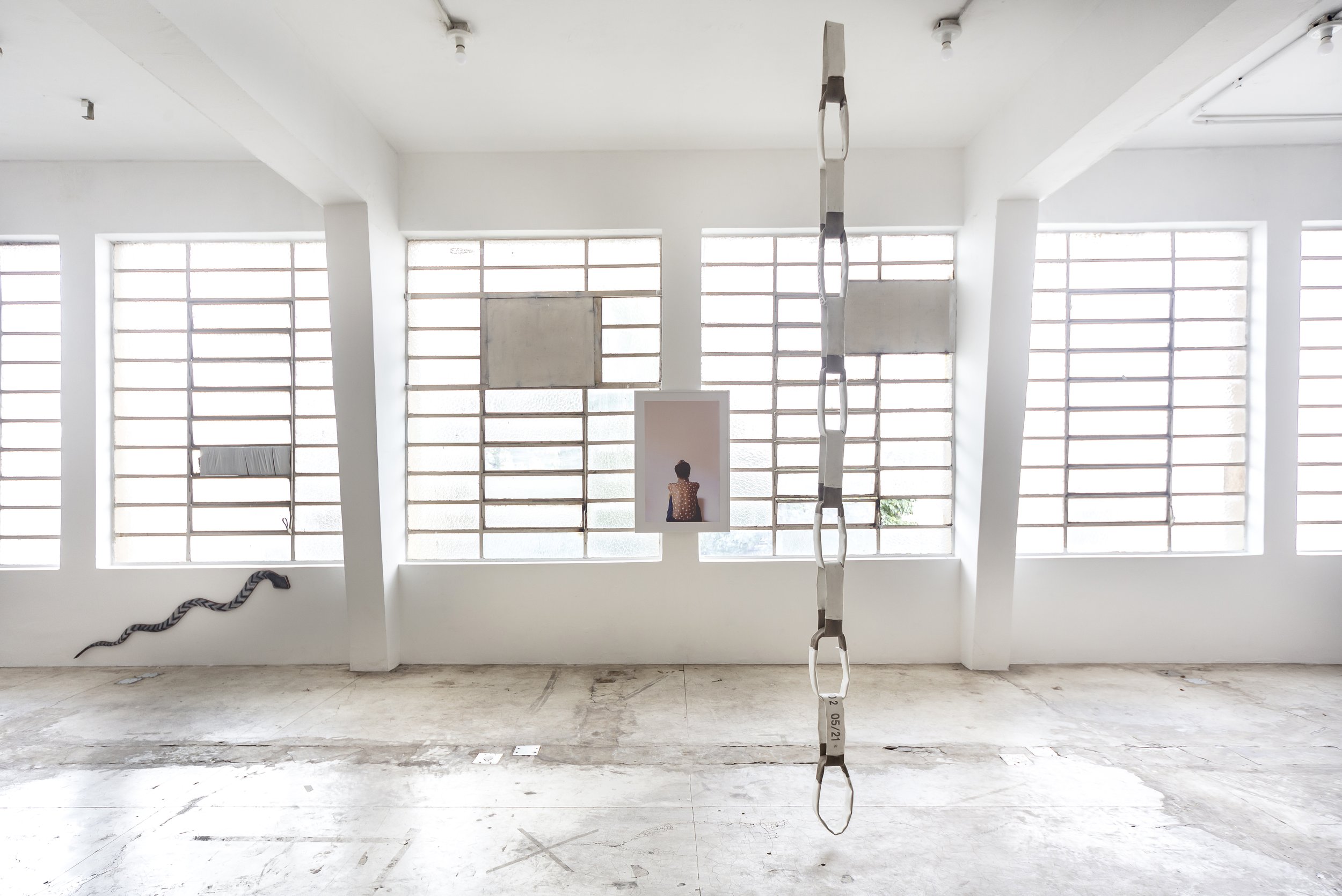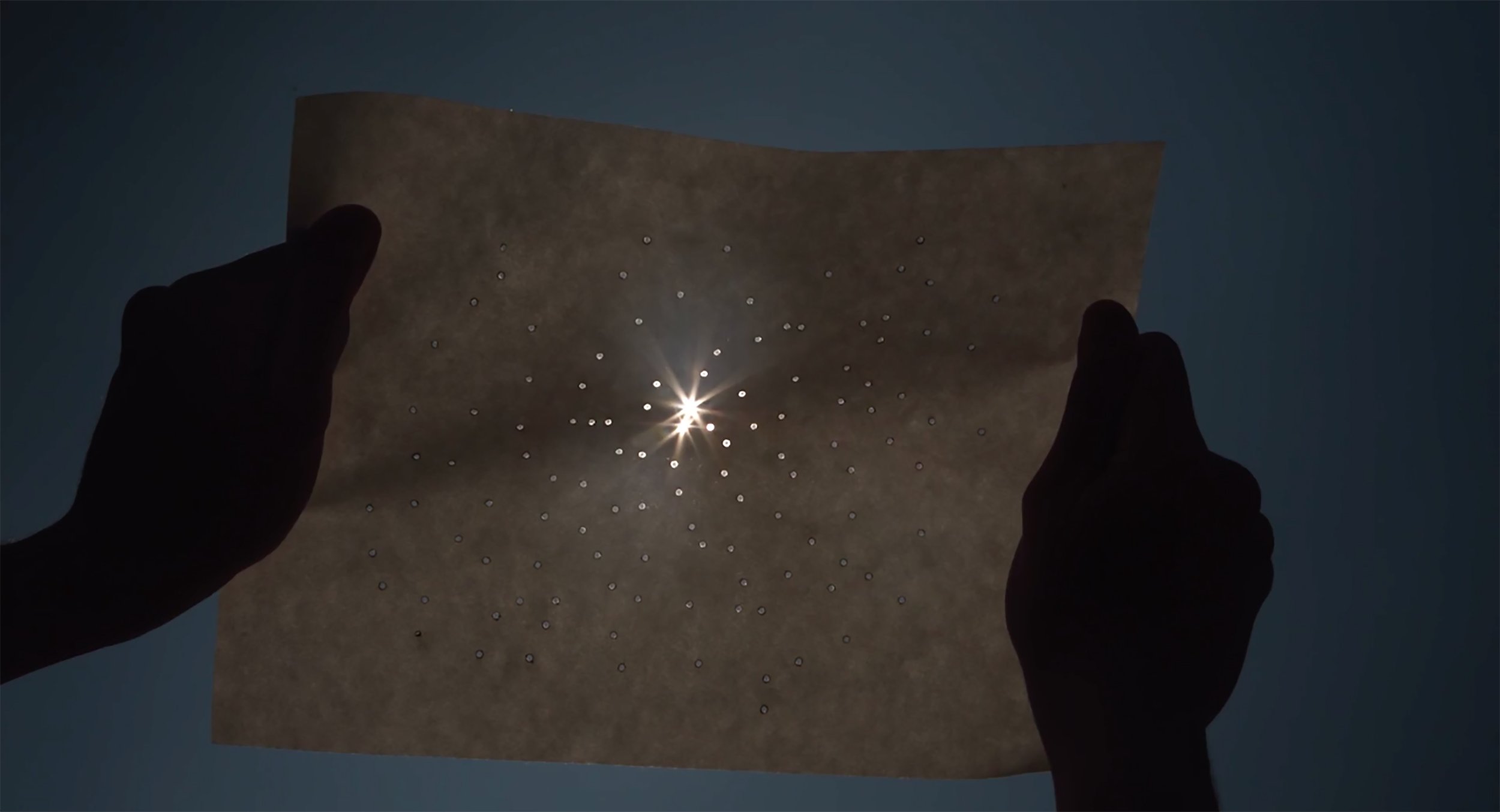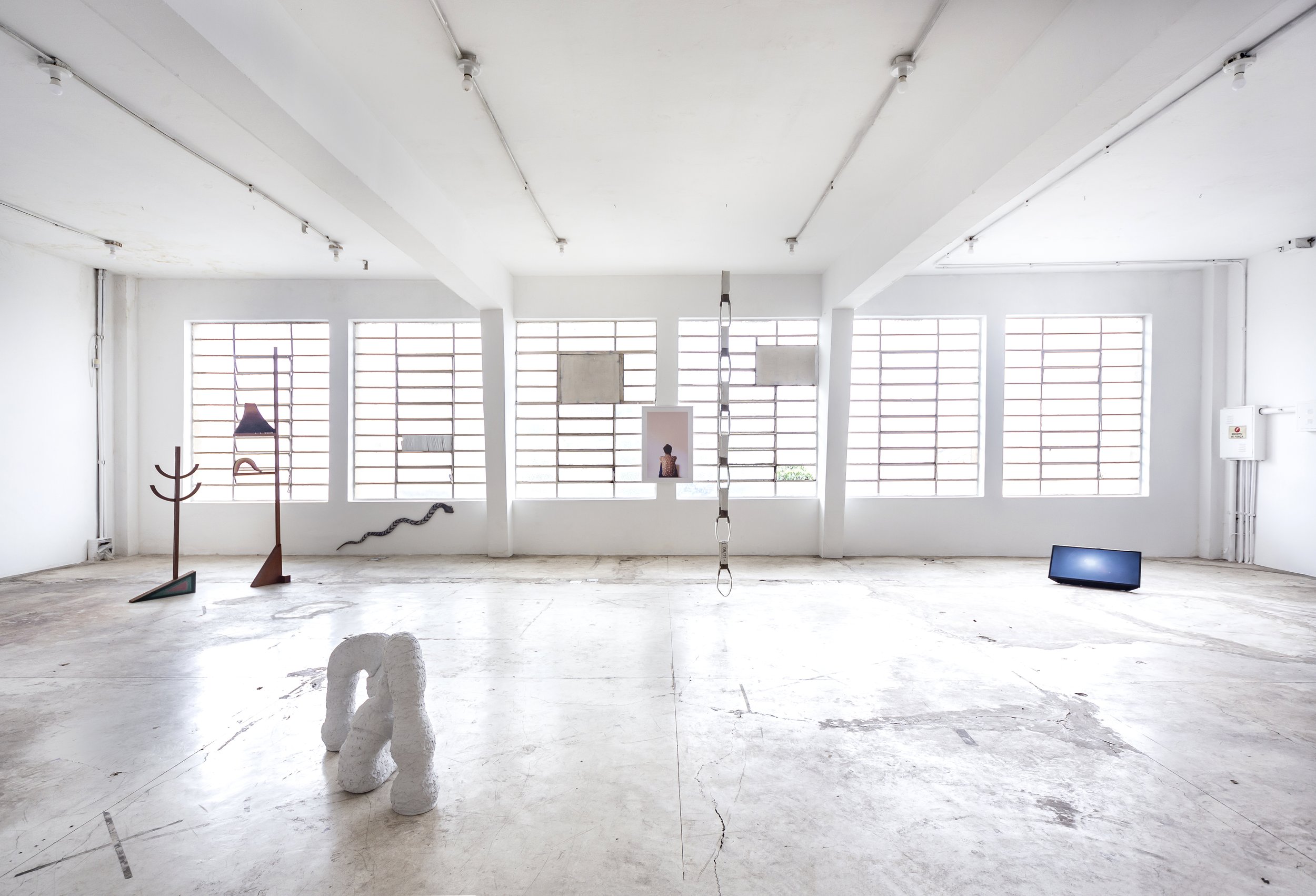Exhibition view: from left to right Ana Mazzei, Monica Ventura and Juan Casemiro. Pic: Leka Mendes
Exhibition view: from left to right: Juan Casemiro, Laura Belém, Theodore Ereira-Guyer, Anderson Borba, Carolina Cordeiro and Alexandre Canonico. Pic: Leka Mendes.
Exhibition view: from left to right, Darks Miranda, Zé Tepedino, Lin Yi Hsuan. Pic: Leka Mendes.
Monica Ventura, Pemba II, 2023, digital photography on cotton paper, 50 x 85 cm. Pic: Leka Mendes
Lin Yi Hsuan Half banked people and Path of Bohemianism, 2023, oil and spray on paper, 170x100cm each, Pic: Leka Mendes
Exhibition view: from left to right, Carolina Cordeiro, Anderson Borba and Alexandre Canonico. Pic: Leka Mendes.
Laura Belém Entre as Estrelas e Seus Olhos, 2018, Vídeo [Video] 8’27”
Exhibition view: from left to right, Ana Mazzei, Raphaela Melsohn, Monica Ventura, Juan Casemiro and Laura Belém. Pic: Leka Mendes.
WARM SUN COLD RAIN - São Paulo Chapter
With Alexandre Canonico, Arorá, Ana Mazzei, Anderson Borba, Carolina Cordeiro, Darks Miranda, Juan Casemiro, Laura Belém, Lin Yi Hsuan, Monica Ventura, Raphaela Melsohn, Theodore Ereira-Guyer and Zé Tepedino.
On view at Galpão Cru, 802 rua Cruzeiro, São Paulo, Brazil, from November 23rd until December 16th 2023.
A collaboration between The Bridge Project and Elizabeth Xi Bauer gallery (London).
Wandering in São Paulo, a tentacular and vertical city, pulsating and fast-paced, you try to grasp where you are in this world like place. Far from the cliché of tropical Brazil, here the sun and the clouds appear fugitively in the interstices of a horizon of spikes, refl ected in the mirroring facades of the buildings along gridlocked avenues. Bodies of all colors and shapes cross each other on the sidewalks and squeeze into the crowded buses and metro cars that swallow and spit out hurried humans. The scorching sun makes sweat drip down the necks and backs. The hot air feels like it´s coming straight out of an oven on full blast. Soon the wind picks up and the fringes of the orphaned palm trees sway harder, heralding the rain. The sky turns into a dramatic purple, lit up with lightning. Anhangá - the guardian spirit of nature - whirls furiously and torrents of water begin to sweep through the dirty streets. Passers-by take refuge under the marquees, waiting for the storm to pass. Some dare to cross the rivers that are now tumbling down the slopes. At this moment, time and the city are suspended. Nature, forgotten in the rush of everyday life, has decided to speak. Trees fall down, the rivers that fl ow sinuously under the asphalt merge with the rain, overfl owing and turning the alleys into waterfalls. Piled up on the edges of the pavements, passers-by comment on the weather, the chaos, exchange ideas and jokes, mocking - with reverence - the rebellious elements. In Tupi land, everyone is a foreigner and in the face of the storm, we are grains of sand. At this crossroads, fl oating in the middle of a melting pot of origins and infl uences, between blossoming city and decaying city, wild palm trees and concrete jungle, Portuguese and crack stones, your face wet with rain, curiously, you feel embraced. Rain is rain, whether it’s falling from the clouds over Brussels or São Paulo. Little by little, the curtains of water spread out and let golden rays appear amid the still heavy clouds. A magical hour out of time. For an instant, the city connected - by force - with the Inhampabuassu, its root, the place of its origins. Warm Sun Cold Rain’s artists seem to be talking about this place. Between North and South, East and West, their works refl ect the richness of diversity, the brilliance that exists in the mirroring gaze of the other, the magic of walks and crossings, the sublime of nature, weaving a subtle web of intertwined aff ections. Like this, beyond the indistinct mass of urban chaos, Arorá’s delicate sculpture suggests the transcription of a feeling into matter, a precious and rare event like fi nding a pearl in the sea or in the rubble of the earth, tensioned with the coldness of a wire that gains new powers. Alexandre Canonico, Juan Casemiro and Raphaela Melsohn also seem to invoke this thought of a fertile common ground, an idea of connection that happens within and beyond individualities. An encounter that takes place at the junction, on the bridge established by the artists, where the work exists through the whole of its elements: in Canonico’s metal alleys, in the chiaroscuro links of the fi re hoses rescued by Casemiro and in the organic elbows of Melsohn’s mutually engulfi ng ceramic sculptures. No-one is an island. In this territory of inside-outside, humans and nature (re)connect and merge, as Ana Mazzei’s animistic theatre of wooden sculptures and Theodore Ereira-Guyer’s waterscapes constellated of thousands of pins suggest. The sky also bestows its protection within this great confl uence, with Carolina Cordeiro’s “Cruzeiro do Sul” installation - representing the smallest of the Southern Hemisphere’s constellations, present on so many fl ags and carrying many meanings – or with Darks Miranda’s sculptures, half alien half nature and with the video in which Laura Belém reveals, hole after hole, the brilliance of the sun. This pulse beats in our chests, carrying a desire to belong, to be seen and welcomed. A longing for a primordial embrace. The burnt skin of Anderson Borba’s sculptures and the moonlike spots of Monica Ventura’s Pemba seem to synthesize this search, bringing together past and present, like the missing link of a common origin. In this search, the walk and the crossings evoked by Lin Yi Hsuan and Zé Tepedino point to the importance of displacement, of crossing, perhaps following and revealing the thread of this universal weave that few can see that only a delicate and attentive eye can perceive. Echoing with the nomadic awareness and the autonomy of art as a shield against blind mass culture, Warm Sun Cold Rain invites us, after a chapter in the northern hemisphere, to a shared journey in the archipelago of subjectivities and beyond, where aesthetics serves as an expression of diversity. On this walk, we remember that rocks were once canvases and that, together with the stars, they once played the role of churches and banks. We can imagine invisible bridges between islands, temporal and spatial distances shrinking until they disappear, like a beam of light in the middle of the clouds, like a shelter on the edge of the pavement under the rain.
Exhibition view: from left to right, Darks Miranda, Arorá, Zé Tepedino, Lin Yi Hsuan, Raphaela Melsohn, Theodore Ereira-Guyer and Ana Mazzei. Pic: leka Mendes.













